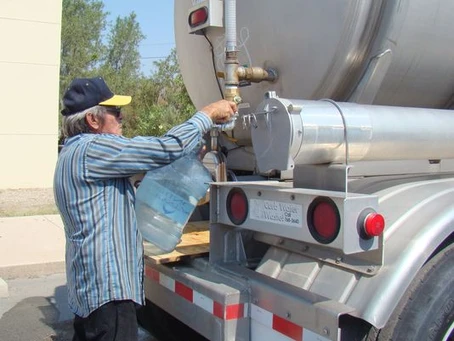TESTING FILL WATER
Introduction – It has been a long held recommendation in the swimming pool industry to test the tap or fill water of a swimming pool (regardless of the interior finish) prior to filling any pool.
General Description – Many parts of the United States have undergone significant changes in the potable water delivered from local municipalities or wells to the homes and businesses in their water district. Some of these changes have been brought about by drought conditions, extreme flooding, or the need to find alternative water sources. Population growth in certain areas has also created the need for alternative sources of water. Such changes can alter the chemical makeup from previously existing levels.
The need to test fill or tap water should no longer be an option. It is strongly recommended that plasterers, builders, service companies, and start-up persons make pre-testing of the source water a mandatory requirement in their business practices. This will help minimize the likelihood of surface issues whether a new pool, a remodeled pool, or simply pool water that is being drained due to a high mineral content or a high cyanuric acid level.
There are a variety of problems that may occur from the usage of certain sources of water, or from the failure to correct the water chemistry PRIOR to usage. Three of the most common issues, relating to the interior finish are:
1) Deterioration – Tap or fill water that has a low pH, low calcium hardness, or low
carbonate / total alkalinity,
2) Mineral Salt Scale – Tap or fill water that has a high pH, high calcium hardness, or
high total alkalinity contents, or
3) Metal Staining – Tap or fill water that has elevated levels of dissolved metals. The most common metals are copper, iron, and sometimes manganese.
Low levels of calcium hardness, total alkalinity, or low pH can lead to deterioration and etching of surfaces, dissolution of grouts, and damage to the pool equipment.
High levels of calcium hardness, total alkalinity, or high pH can lead to scaled surfaces and staining discoloration.
Dissolved metals in the water can lead to staining and/or discoloration of surfaces and grouts.

Prevention – The best method to prevent these issues is to test the water prior to usage or immediately after the pool is full, using a test kit that is capable of testing pH, total alkalinity and calcium hardness. Specialty kits should be used to test for common metals. Adjust the water to the proper ranges or treat for metals if necessary.
Consumers who start up their own pool should be provided a copy of this bulletin advising them of this industry practice. This entails the usage of a proper test kit establishing a regimen of pre-filling testing and adjusting the water chemistry to within the proper ranges.
The recommended procedures and recommended water chemistry for initial start-ups can be found in NPC’s “Swimming Pool Start-up Procedures”, which can be obtained from the NPC website www.npconline.org . These start-up procedures stress the need to test fill water, record the results, and act upon those results, regardless of the type of finish in your pool.
